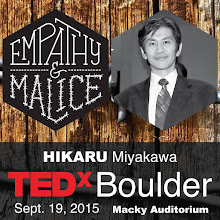I am very happy and honored to be included in this wonderful exhibition. My deep appreciation and congratulations to Santiago Ribeiro-san, Bissaya Barreto Foundation, and the fellow artists who are participating in this exhibition! (Hikaru)
BISSAYA BARRETO FOUNDATION
Surrealism Now, INTERNATIONAL EXHIBITION
BISSAYA BARRETO MUSEUM HOUSE
SANT´ANNA CONVENT, COIMBRA, PORTUGAL, EUROPEAN UNION
Open 20th of May, 18:30, until 30th of June 2010
Idealization and coordination: Santiago Ribeiro
Institutional support: Intervention Brigade
SURREALISM NOWBissaya Barreto Foundation
Idealization and coordination: Santiago Ribeiro
Institutional support: Intervention Brigade
Exhibitions, Portugal, 20 May 2010
International Exhibition 2010 Surrealism NOW
The Bissaya Barreto Foundation will open to the public, on 20th May, at 18:30, an International surrealism NOW exhibition
The exhibition will take place in Bissaya Barreto Museum House and Sant´Anna Convent in Coimbra, Portugal, European Union.
Also online exhibition connected.
Participant artists:
Otto Rapp, Oleg Korolev, Daniel Hanequand, Ton Haring, Viktor Safonkin, Peter van Oostzanen, Hikaru Hirata, Patricia van Lubeck, Dean Fleming, Christhopher Klein, Sergey Barkosky, Larkin, Carlos Aguado, Sonja Tines, Gerardo Gomez, Lv Shang, Alessandro Bulgarini, Pedro Diaz Cartes, Elizabeth Pantano, Egill Ebsen,Octavian Florescu, Dan Lydersen, Pavel Surma, Krzysztof Wlodarski (Kali), Shahla Rosa, Sampo Kaikkonen, Miguel Ruibal, Jo Rizo, Ludmila, Lourenço Gonçalves, Sergey Tyukanov, Mehriban Efendi, Carlos Godinho, Victor Lages, Meme, Hector Pineda, Gromyko Semper, Slavko Krunic, Adam Scott Miller, Roland Heyder, Vu Huyen Thuong, Santiago Ribeiro, Keith Wigdor.
more:
Fernando Araujo, Carel Verelgh, Maciej Hoffman, Nadide Gürcüoğlu, Rui Cunha, Francisco Urbano, Mirek Antoniewicz, João Duarte, Nazareno Stanislau, Rudolf Boelee, Madrigal Arcia, Ignacio Casanovas, Dijana Iva Sesartic.
link: http://internationalexhibition2010.weebly.com/int-exh-2010-artists.html
During the Exhibition, slides of paintings will be viewed on LCD screens from artists taking part in online exhibition present in this site:
http://internationalexhibition2010.weebly.com/index.html
Also, during the Exhibition, a list of online participant artists will be shown.







